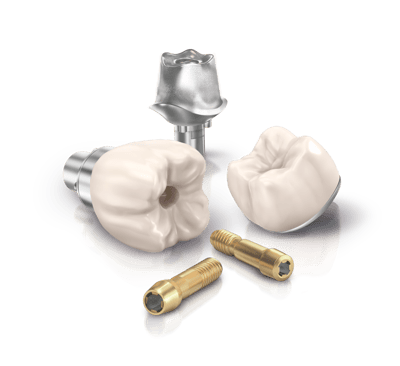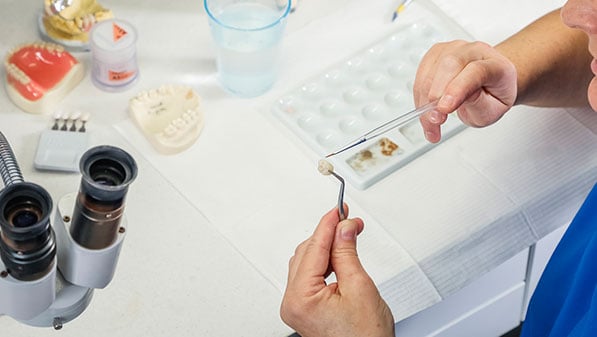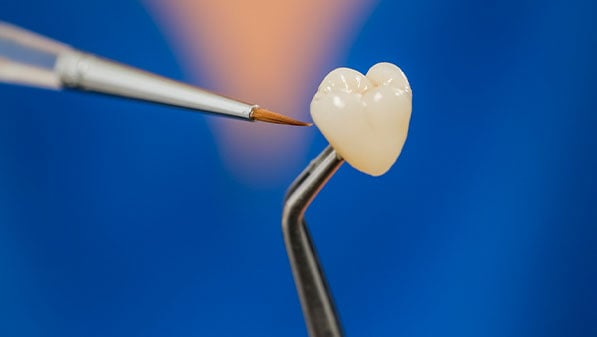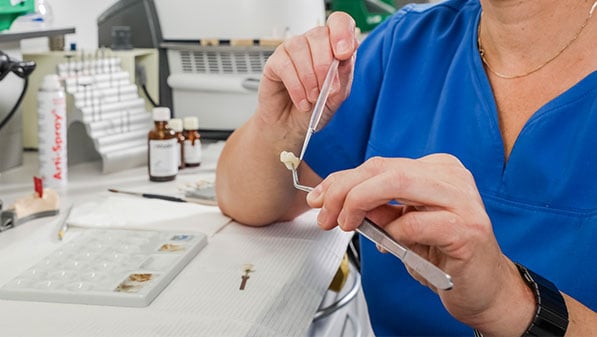
Contact Us
Have a question? If you can’t find what you’re looking for, contact our customer service team via contact us page, or call (02) 8062 9800.

The long-term reliability of PFM can hide metal abutments due to layering of opaque porcelain. Various gold alloy options are available.
This metal-free solution is strong, attractive and opaque enough to hide metal abutments beneath it.
Lithium disilicate offers superb aesthetics but has structural limitations. If used on metal abutments, opaquing is needed.
For optimal anterior aesthetics, it should be placed over a Zirconia abutment.

(eg. Lava™ Ultimate CAD/CAM Restorative, CERAMAGE®)
These offer a more resilient, easily repaired material and cushion the implant against occlusal forces.
Some ceramic-composite hybrids can be:

A high-strength metal-free material produced using a CAD/CAM process allows excellent marginal adaptation, though care with adjustment is required. Careful case selection is necessary to minimise wear of the opposing dentition.
A new formula of Zirconia, offering a unique combination of translucency and strength, Ultra translucent Zirconia is a breakthrough given that traditionally Zirconia is considered a strong but opaque material with questionable aesthetics in anterior regions.
Material Options | PFM | PFZ | FMZir | Resin / | IPS e.max® |
|---|---|---|---|---|---|
| Strength | ✓✓✓ | ✓✓ | ✓✓✓ | ✓ | ✓✓ |
| Longevity | ✓✓✓ | ✓✓ | ✓✓✓ | ✓✓ | ✓ |
| Cushioning | ✓ | ✓ | ✓ | ✓✓✓ | ✓ |
| Cost | ✓ | ✓✓ | ✓ | ✓✓ | ✓✓ |
| Aesthetics | ✓✓ | ✓✓ | ✓ | ✓✓ | ✓✓✓ |
| Indications | Unlimited | Aesthetics Good Strength | Strength | Cushioning/ Less Force Transmitted to Implant (Material Wears) | Aesthetics |
| Ability to be Repaired Intraorally | Limited | Limited | Limited but Rarely Needed | Excellent | Some but Still Limited |